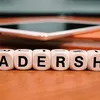Virtualisation, automation, decentralisation: how to harness the eight trends accelerated by the COVID-19 pandemic
This compact book identifies technology, business, and social trends in the pandemic era, and how entrepreneurs can reposition for the new normal.
Launched in 2012, YourStory's Book Review section features over 270 titles on creativity, innovation, entrepreneurship, and digital transformation. See also our related columns The Turning Point, Techie Tuesdays, and Storybites.
A number of trends have been triggered or accelerated by the coronavirus pandemic. This new book poses provocative questions to help entrepreneurs and small businesses assess these trends and navigate towards the new normal.
The eight trends are captured in the catchy acronym SALVAGED: self-sufficiency, analytics, liquidity, virtualisation, automation, government, exponential thinking, and decentralisation. From AI and electric vehicles to remote work and trade wars, the book spans a wide range of issues.
A graduate of Canada’s Carleton University, business futurist and author Patrick Schwerdtfeger is now based in California. His earlier book on AI and Blockchain was Anarchy, Inc. His latest book is Pandemic, Inc.: 8 Trends Driving Business Growth and Success in the New Economy.
Here are my key takeaways from the 185-page book. See also my reviews of the related books Coming back from COVID and The Resilient Organisation, as well as YourStory’s Pivot and Persist section for case studies, and compilation of 60 Quotes on Coping with a Crisis.
The context
The book begins by sketching some of the grim realities of the pandemic era, before moving on to emerging opportunities. “The COVID-19 pandemic threw everything into disarray, and it will take a long time for the new normal to emerge,” Patrick begins.
Problems like unemployment, insolvency, bankruptcy, and social unrest will have domino effects at the micro and macro levels across societies in the coming months and years. Trade, supply chains, and stock markets will be impacted, and protectionist and populist policies are accelerating, Patrick cautions.
“Tourism and corporate events generate huge amounts of commerce, but it will be years before they return to pre-pandemic levels, if ever,” he cautions. The pandemic will also exacerbate the already widening division between rich and poor.
However, there are concrete steps companies can take to survive, rebuild, and thrive. “We have never needed business leadership more than we do today,” the author emphasises.
“You need to look for opportunities amidst the chaos. You need to look for problems and fix them. You need to seize this moment to redefine tomorrow’s economy,” he urges.
“We can’t imagine the possibilities today, but the creativity of our global population is undeniable,” Patrick adds. Global connectivity is helping the discovery, sharing, and development of ideas faster than ever before.
“We have also seen a resurgence of kindness within our communities,” he adds, pointing to the rise of “caremongering” in Canada as one of the numerous examples. He advises audiences to stay away from some of the negativity portrayed in mainstream media and be sensitive to the anxiety in communities.
“Failure to adapt = Failure to exist,” the author writes. He urges business leaders to be cognizant of human yearning for safety, and find opportunities to reshape the world. Promising sectors to watch are virtual work, online entertainment, ecommerce, food delivery, and pharmaceuticals.
Many tech companies are less disadvantaged than others and have actually made gains. Technology is accelerating decentralisation. There will also be more emphasis on local communities and products, and demands for universal healthcare and higher minimum wages could increase.
1. Self-sufficiency
The need for self-sufficiency for communities and countries is accelerating. Solar energy solutions and electric vehicles are gathering momentum, reducing the dependence on fossil fuels.
The gig economy for a range of services is gathering more steam. “Sadly, the increased supply of gig economy workers will drive down the cost of gig economy services, putting downward pressure on income potential,” Patrick cautions.
Increased automation in manufacturing will reduce the need for offshoring. Many countries are uniting against the “unfair trade practices” of China, and trade disputes are increasing, the author observes.
2. Analytics
The pandemic crisis has highlighted the importance of reliable, high-quality, and real-time data. The incubation period for the flu is two days, as compared to two to seven days for SARS and five to 14 days for coronavirus; this difference explains its greater exponential spread.
For example, South Korea learnt valuable lessons from the earlier SARS and MERS outbreaks and proactively tested during the COVID-19 pandemic. This helped leverage the resulting data to reduce the spread of cases and deaths. This was in contrast to the “bumbling response in America,” the author observes.
“Healthcare will transform dramatically in the years ahead, and much of that transformation will be driven by data analytics,” Patrick explains. This can help analyse possible medications from vast molecular datasets.
New entrants in the healthcare space include Walmart Care Clinics and Amazon Care. Telemedicine is also accelerating, as seen in companies like Teladoc Health.
“Accelerated approval timelines, streamlined bureaucracy, and more effective use of data will all play a role in better outcomes during subsequent viral outbreaks,” Patrick predicts.
Companies should probe and reflect on what kinds of data can be made available, how data improve decision-making, and how to build the necessary organisational skills and roles.
Investors are funding new companies that leverage data-based decision-making in growth sectors. Other trends to watch are the rise of data-driven marketing for better personalisation, and sophisticated advertising platforms.
3. Liquidity
“The pandemic brought enormous human suffering, but the quarantine and economic fallout brought the cash flow crisis,” Patrick observes.
“Cash is king. Cash is survival. Liquidity is essential,” he emphasises. The first key priority for businesses is to simply survive.
Governments are hard-pressed to provide relief and stimulus packages. Ripple effects of financial strain will flow upward and outward as unemployment and inability to pay increase.
“Scrappy entrepreneurship” and frugal practices are the need of the hour. It calls for momentum and experimentation to find the next step. “You need to take action in the direction of your goals, and then trust that the next steps will reveal themselves along the way,” Patrick advises.
Experiments should be simpler and cheaper, and faster iteration will help move towards viable business models and marketing techniques. Joint ventures should be explored with partners as well.
4. Virtualisation
“Work will go virtual. Events will go virtual. Companionship will go virtual. Education will go virtual. Healthcare will go virtual,” Patrick explains.
Freelancers have already mastered the art of working remotely, and larger firms are now discovering the ups and downs of virtualisation. “In the future, productivity and reduced costs, along with fear of another pandemic, will propel the trend forward,” the author predicts.
Virtualisation can also spur employees to move to smaller cities as more attractive alternatives to crowded urban clusters. Commercial real estate in large cities may suffer.
In-person events have higher engagement, but online events have other advantages. Mixed reality (AR/VR) solutions will improve the experience, particularly in sectors like travel and hospitality. Platforms to watch in this regard are VRChat, as well as tools like Oculus Rift and HTC Vive.
“Human creativity is truly boundless, but it’s only unleashed when open participation and co-creation are encouraged,” Patrick observes.
He advises companies to spend more time investigating virtual worlds and how they may impact customer engagement. The role of “virtual influencers” is rising, as seen in KFC’s virtual Colonel Sanders and Noonoouri.
Other trends to watch are “digital celebrities,” virtual assistants, and even “robotic sex dolls,” for example, RealDoll, YourDoll, and LumiDolls. Some such trends may be disturbing and even dangerous, the author cautions.
Increasing use of social media without in-person interactions can also result in higher levels of loneliness and depression, he warns. Isolation from others can increase with damaging psychological effects.
School education is going increasingly virtual, along with gamification, for example, the Freckle Math’s avatars. Virtual learning technologies will transform adult training as well, reducing the dependence on formal degrees.
“History shows that technology disruptions can turn industries upside down within 10 years,” Patrick observes.
5. Automation
The rise of robotic process automation (RPA), 3D printing, self-driving cars, drones, and self-service kiosks are other trends to watch. But jobs like cashiers and drivers could be under threat, Patrick cautions.
“3D printers have played an interesting role during the crisis,” the author observes, pointing to the design of masks, swabs, and ventilator components as examples. They facilitated rapid, low-cost prototyping, and designs were shared from around the world.
The author classifies tasks into four types: repetitive and non-repetitive for manual and cognitive activities. “The manual repetitive tasks will eventually be replaced by robotics, and the cognitive repetitive tasks will be replaced by algorithms,” he explains.
“Non-repetitive tasks will define the jobs of the future,” Patrick predicts. Human capabilities such as empathy, regret, shame, and love are hard to emulate by machines.
Manual non-repetitive tasks might involve agility, coordination, or athletics, while cognitive non-repetitive tasks might include creativity, negotiation, emotional intelligence, or teaching, he observes.
For example, self-checkout kiosks at Costco and MacDonald’s reduce the need for cashiers. The Mayo Clinic in Florida used autonomous vehicles to deliver testing kits, and robots were used in Chinese and Italian hospitals to deliver meals to COVID-19 patients, the author describes.
“Regulators will have a renewed sense of urgency to pass legislation allowing these technologies to deploy,” he adds.
Autonomous vehicles coupled with cloud intelligence open up the possibility of diverse learning at scale via “fleet intelligence,” the author explains, citing Tesla as an example.
Taxi-sharing companies are actively exploring self-driving cars to cut down costs and increase utilisation of vehicles. This could lead to less need for parking spaces in urban clusters but also increased traffic. Environments with fewer obstacles will gravitate faster to autonomous driving, such as farms and mines, followed by highways, and then suburbs and urban centres.
Automation will change employment markets and drive the necessity for lifelong learning. “People will need relevant skills to be employed in tomorrow’s economy,” Patrick urges.
He advises companies to map out repetitive tasks of their employees and customers and work out the implications of automation. This can lead to permanent loss of some jobs, enhancement of some roles, or even an opportunity for expansion.
Overall, there could be a higher need for jobs at the “self-actualisation” level, such as coaches, therapists, and self-help gurus.
6. Government
One short chapter addresses the increasing role of government and global organisations during the pandemic era. “Whether you like the government or not, there’s no question that it has far more power than it did before this outbreak started,” Patrick explains.
“We have already given up enormous personal freedoms since the pandemic was declared,” he adds. Suspicion about global organisations has increased, as well as an awareness of the important role they can play – a balanced view is called for.
A range of conspiracy theories is also on the rise. “There are some who believe the famously unrevealed Bitcoin Founder, Satoshi Nakamoto, was actually the CIA,” Patrick writes.
Governments and central banks play an important role in stimulating the economy and have a budget to spend. Businesses should look at how to engage governments as customers and partners.
7. Exponential thinking
Understanding digital transformations entail the comprehension of exponential growth and impacts, Patrick explains. Human beings are hardwired to think in linear terms, and that makes compounded growth hard to understand.
The progression looks insignificant at the start, but the hockey stick inflection later leads to almost vertical growth. “If you took thirty steps in an exponential sequence, where each step was double the previous step, you would’ve walked around the world nine times,” he cites as an example.
The author advises companies to examine technologies in their lives and ask what would happen if they were 10 times as powerful or 100 times cheaper, and what the competitors would do in such cases.
Today, the explosive growth of the COVID-19 cases has made the general public more aware of the power of exponential growth, the author explains. Components of climate change also yield interlocking exponential impacts.
As technology products become exponentially more powerful, cheap, and ubiquitous, first-mover advantage is important but can be upstaged by nimble second-movers. The author advises companies to look at market growth patterns like the S-curve in this regard; the tipping point can be at around 16 percent penetration.
8. Decentralisation
The trend of decentralisation is observed in individual and organisational areas as diverse as the media, solar energy generation, and blockchain architecture, Patrick explains. The pandemic has accelerated this trend.
“Social distancing and working from home are reducing human proximity, and people will be left fearful even after a vaccine has been developed,” the author cautions.
“Social media has many benefits. As a population, we’re more connected than ever. But it’s also destroying the social fabric of our culture,” Patrick cautions.
Social media is creating connections as well as cocoons (or echo chambers and bubbles). The rise of polarisation, tribalism, ‘alternative facts,’ and fake news are related trends. “The net result is a world with multiple realities, literally, and multiple versions of the ‘truth,’” the author observes.
The rise of distrust in central authorities is spurring anarchy (not the same as violence). It could become harder to trust strangers, the author cautions. All this fuels the trend of decentralisation.
To stand out, companies must pick their positioning and values carefully and stick to them boldly and assertively, the author recommends. Leading influencers are not apologetic about their stands.
“Passion sells. This has always been true,” Patrick observes, pointing to passionate politicians, entertainers, and business leaders as examples. Audiences want to know a company’s purpose, position, and cause more clearly now.
The author advises companies to examine how to build products and services on platforms or decentralised networks, or that can help people deal with some impacts of decentralisation, for example, mental illnesses.
In the context of the workplace, a trend to watch is the Results Only Work Environment (ROWE), where employees are tracked only for task completion and the number of hours worked or location. The author advises companies to examine how increasing remote work would affect their performance.
In the area of IT infrastructure, cloud computing and the blockchain are drivers towards decentralisation. However, blockchain is still too complex for the average person to understand.
It can transform supply chains, digital identity solutions, and digital payments, the author explains. But cryptocurrencies will be strongly resisted by established stakeholders.
The author contrasts the centralised citizen identity solution of India (Aadhaar) with the ID2020 blockchain-based digital identity ledger. They differ in features like cost, structure, and usability contexts.
The author compares blockchain to open source software as a decentralised public utility. Core components are free, but for-profit businesses thrive by offering customisations and support services. There could be public utility versions of Uber, Paypal, and Airbnb without those companies, the author speculates.
Though decentralisation is a trend, the author also points to the rise of centralised tech giants and platforms. “Large technology infrastructure providers are consolidating power,” Patrick observes.
The road ahead
The future is about disruptive innovations that invalidate existing business models, the author sums up. “One core difference between incremental and disruptive innovation is that incremental innovation comes from the centre of expertise while disruptive innovation comes from the edges,” he describes.
Unfortunately, incumbents may suffer from selective attention or “institutional blindness” towards new or peripheral possibilities. Disruptive innovation usually comes from adjacent industries or new competitors, targeting the lower end of the customer base.
For example, Amazon disrupted the book business with its Kindle e-reader, and Google and Apple are disrupting the automobile business. The benefits of Vitamin D3 were first realised in the world of horseracing, the author adds.
“The day before something is a breakthrough, it’s a crazy idea,” in the words of entrepreneur Burt Rutan.
The author also cites Jeff Walker’s Product Launch Formula as a new way of engaging prospects, establishing trust, and building anticipation. The model moved from the fringe online information marketing industry to mainstream markets.
The author advises companies to examine their fringes and adjacent industries. “Find the crazy people in your field, and see what they’re doing,” he suggests.
“The message of this book is to think bigger. Think bigger about what’s possible. This is a time of extraordinary change. The whole world is upside down, but that spells opportunity for entrepreneurs and business leaders,” the author enthuses.
Business leaders should focus on new possibilities, think in first principles, and have bold ambitions. Articulating big vision inspires employees, partners, customers, and even competitors.
“The COVID-19 pandemic has blown all the traditional limitations out the window. Everything is on the table. Anything is possible. Embrace this moment. Reimagine tomorrow’s economy. As difficult as this time is for many, it’s also the opportunity of a lifetime,” Patrick signs off.
Edited by Suman Singh











